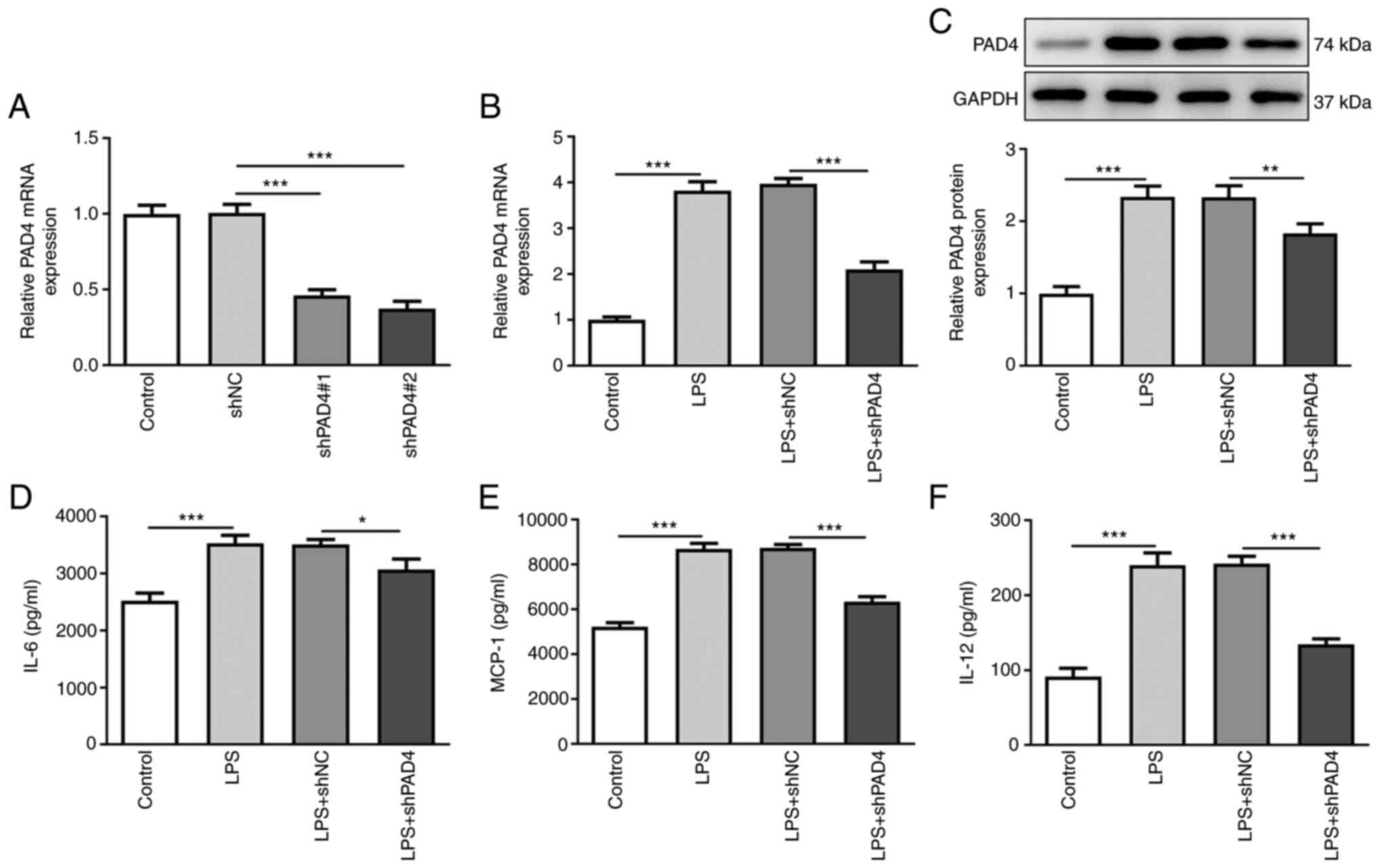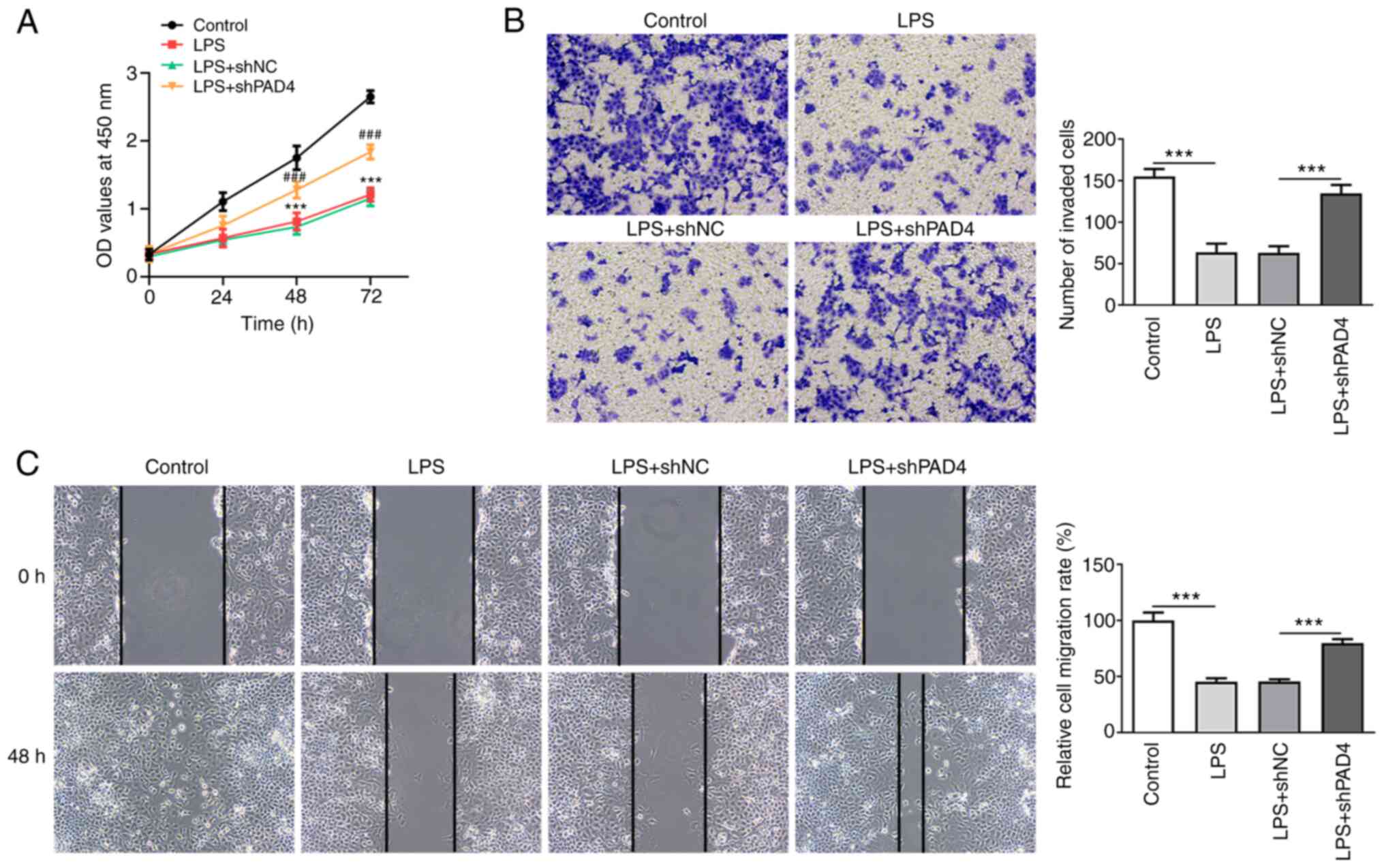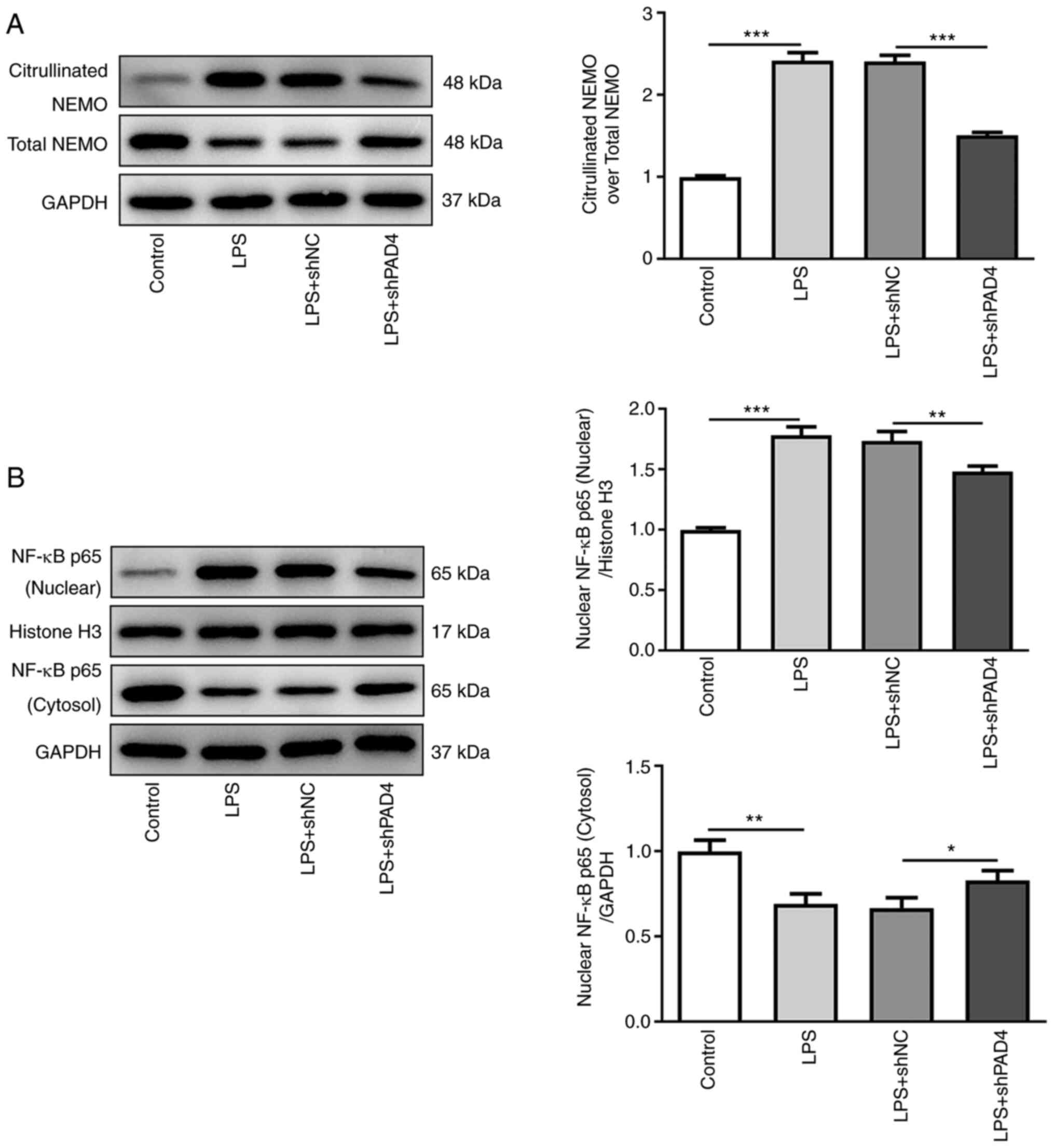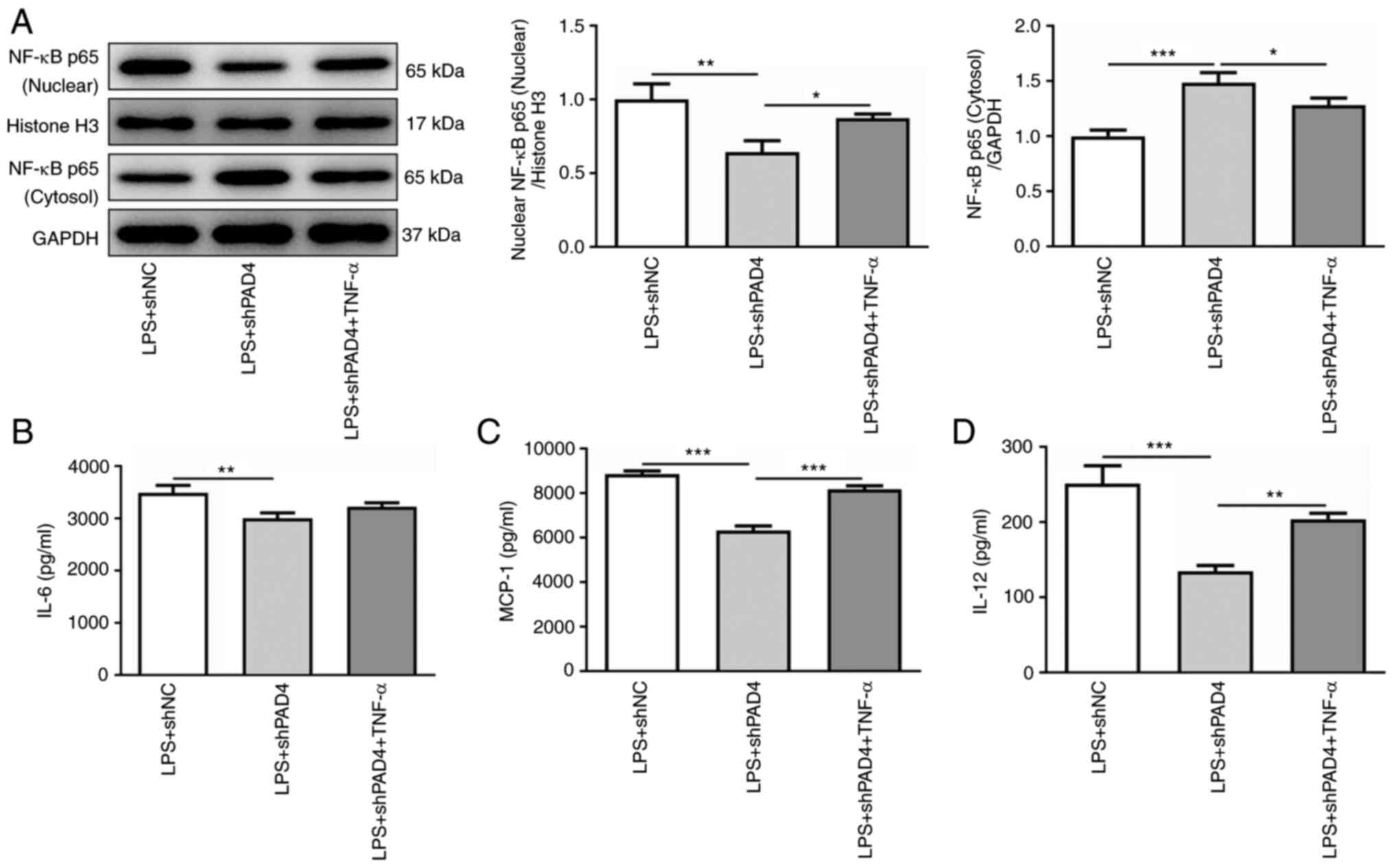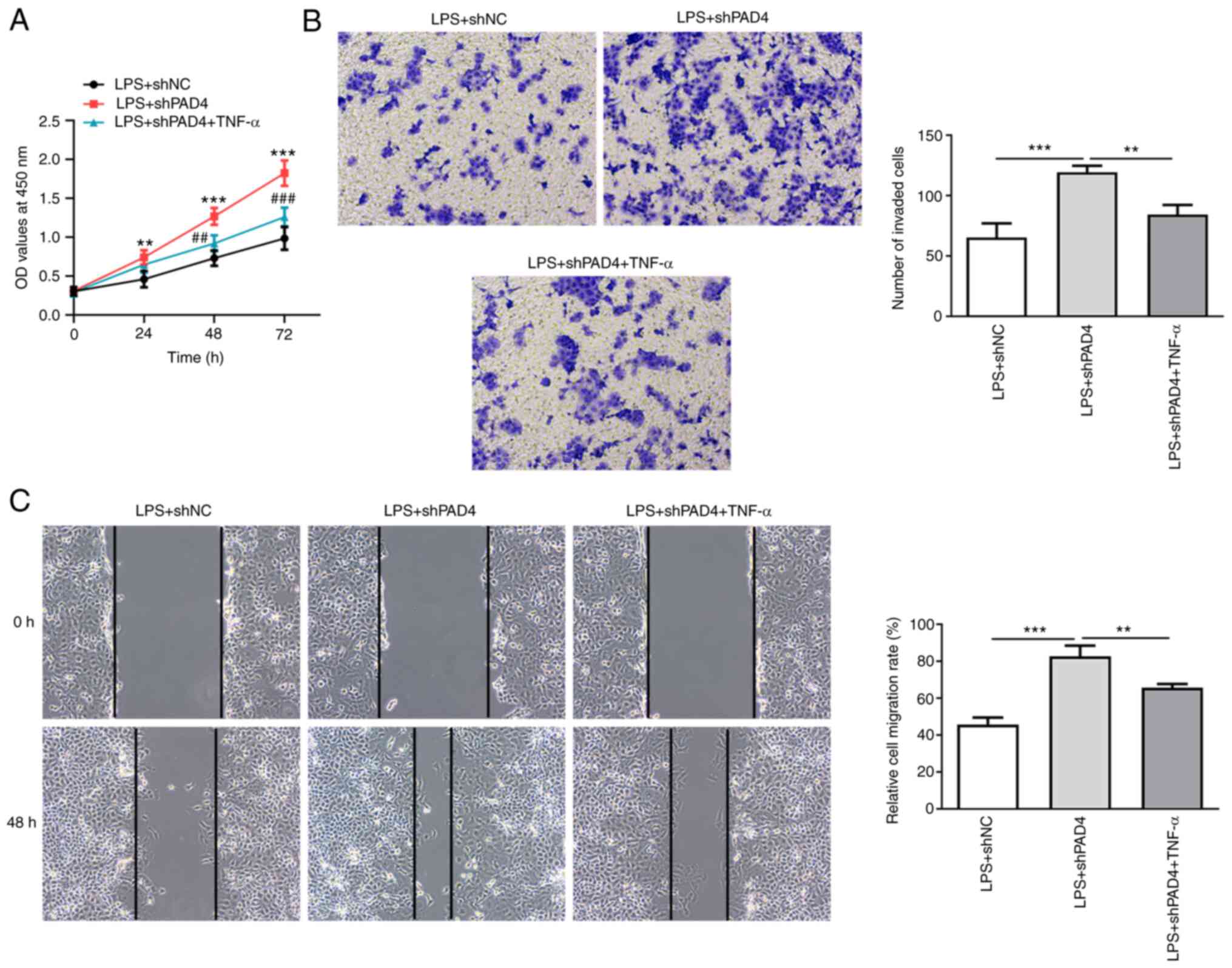|
1
|
Capriglione S, Plotti F, Terranova C,
Gulino FA, Di Guardo F, Lopez S, Scaletta G and Angioli R:
Preeclampsia and the challenge of early prediction: Reality or
utopia? State of art and critical review of literature. J Matern
Fetal Neonatal Med. 33:677–686. 2020.PubMed/NCBI View Article : Google Scholar
|
|
2
|
Mazzuca MQ, Li W, Reslan OM, Yu P, Mata KM
and Khalil RA: Downregulation of microvascular endothelial type B
endothelin receptor is a central vascular mechanism in hypertensive
pregnancy. Hypertension. 64:632–643. 2014.PubMed/NCBI View Article : Google Scholar
|
|
3
|
Li X, Wu C, Shen Y, Wang K, Tang L, Zhou
M, Yang M, Pan T, Liu X and Xu W: Ten-eleven translocation 2
demethylates the MMP9 promoter, and its down-regulation in
preeclampsia impairs trophoblast migration and invasion. J Biol
Chem. 293:10059–10070. 2018.PubMed/NCBI View Article : Google Scholar
|
|
4
|
Xie N, Jia Z and Li L: miR-320a
upregulation contributes to the development of preeclampsia by
inhibiting the growth and invasion of trophoblast cells by
targeting interleukin 4. Mol Med Rep. 20:3256–3264. 2019.PubMed/NCBI View Article : Google Scholar
|
|
5
|
Rohrbach AS, Slade DJ, Thompson PR and
Mowen KA: Activation of PAD4 in NET formation. Front Immunol.
3(360)2012.PubMed/NCBI View Article : Google Scholar
|
|
6
|
Wang S and Wang Y: Peptidylarginine
deiminases in citrullination, gene regulation, health and
pathogenesis. Biochim Biophys Acta. 1829:1126–1135. 2013.PubMed/NCBI View Article : Google Scholar
|
|
7
|
Erpenbeck L, Chowdhury CS, Zsengellér ZK,
Gallant M, Burke SD, Cifuni S, Hahn S, Wagner DD and Karumanchi SA:
PAD4 deficiency decreases inflammation and susceptibility to
pregnancy loss in a mouse model. Biol Reprod.
95(132)2016.PubMed/NCBI View Article : Google Scholar
|
|
8
|
Rabadi M, Kim M, D'Agati V and Lee HT:
Peptidyl arginine deiminase-4-deficient mice are protected against
kidney and liver injury after renal ischemia and reperfusion. Am J
Physiol Renal Physiol. 311:F437–F449. 2016.PubMed/NCBI View Article : Google Scholar
|
|
9
|
Rabadi MM, Han SJ, Kim M, D'Agati V and
Lee HT: Peptidyl arginine deiminase-4 exacerbates ischemic AKI by
finding NEMO. Am J Physiol Renal Physiol. 316:F1180–F1190.
2019.PubMed/NCBI View Article : Google Scholar
|
|
10
|
Vaughan JE and Walsh SW: Activation of
NF-κB in placentas of women with preeclampsia. Hypertens Pregnancy.
31:243–251. 2012.PubMed/NCBI View Article : Google Scholar
|
|
11
|
Sakowicz A, Lisowska M, Biesiada L,
Płuciennik E, Gach A, Rybak-Krzyszkowska M, Huras H, Sakowicz B,
Romanowicz H, Piastowska-Ciesielska AW, et al: Placental expression
of NEMO protein in normal pregnancy and preeclampsia. Dis Markers.
2019(8418379)2019.PubMed/NCBI View Article : Google Scholar
|
|
12
|
Sakowicz A, Hejduk P, Pietrucha T,
Nowakowska M, Płuciennik E, Pospiech K, Gach A, Rybak-Krzyszkowska
M, Sakowicz B, Kaminski M, et al: Finding NEMO in preeclampsia. Am
J Obstet Gynecol. 214:538.e1–538.e7. 2016.PubMed/NCBI View Article : Google Scholar
|
|
13
|
Sakowicz A, Pietrucha T,
Rybak-Krzyszkowska M, Huras H, Gach A, Sakowicz B, Banaszczyk M,
Grzesiak M and Biesiada L: Double hit of NEMO gene in preeclampsia.
PLoS One. 12(e0180065)2017.PubMed/NCBI View Article : Google Scholar
|
|
14
|
Hu J, Zhang J and Zhu B: Protective effect
of metformin on a rat model of lipopolysaccharide-induced
preeclampsia. Fundam Clin Pharmacol. 33:649–658. 2019.PubMed/NCBI View Article : Google Scholar
|
|
15
|
Graham CH, Hawley TS, Hawley RG,
MacDougall JR, Kerbel RS, Khoo N and Lala PK: Establishment and
characterization of first trimester human trophoblast cells with
extended lifespan. Exp Cell Res. 206:204–211. 1993.PubMed/NCBI View Article : Google Scholar
|
|
16
|
Abou-Kheir W, Barrak J, Hadadeh O and
Daoud G: HTR-8/SVneo cell line contains a mixed population of
cells. Placenta. 50:1–7. 2017.PubMed/NCBI View Article : Google Scholar
|
|
17
|
Fan M, Li X, Gao X, Dong L, Xin G, Chen L,
Qiu J and Xu Y: LPS induces preeclampsia-like phenotype in rats and
HTR8/SVneo cells dysfunction through TLR4/p38 MAPK pathway. Front
Physiol. 10(1030)2019.PubMed/NCBI View Article : Google Scholar
|
|
18
|
Livak KJ and Schmittgen TD: Analysis of
relative gene expression data using real-time quantitative PCR and
the 2(-Delta Delta C(T)) method. Methods. 25:402–408.
2001.PubMed/NCBI View Article : Google Scholar
|
|
19
|
Jena MK, Sharma NR, Petitt M, Maulik D and
Nayak NR: Pathogenesis of preeclampsia and therapeutic approaches
targeting the placenta. Biomolecules. 10(953)2020.PubMed/NCBI View Article : Google Scholar
|
|
20
|
Calicchio R, Buffat C, Vaiman D and
Miralles F: Endothelial dysfunction: Role in the maternal syndrome
of preeclampsia and long-term consequences for the cardiovascular
system. Ann Cardiol Angeiol (Paris). 62:215–220. 2013.PubMed/NCBI View Article : Google Scholar : (In French).
|
|
21
|
Pauli JM and Repke JT: Preeclampsia:
Short-term and long-term implications. Obstet Gynecol Clin North
Am. 42:299–313. 2015.PubMed/NCBI View Article : Google Scholar
|
|
22
|
Dai X and Cai Y: Down-regulation of
microRNA let-7d inhibits the proliferation and invasion of
trophoblast cells in preeclampsia. J Cell Biochem. 119:1141–1151.
2018.PubMed/NCBI View Article : Google Scholar
|
|
23
|
Shaw J, Tang Z, Schneider H, Saljé K,
Hansson SR and Guller S: Inflammatory processes are specifically
enhanced in endothelial cells by placental-derived TNF-α:
Implications in preeclampsia (PE). Placenta. 43:1–8.
2016.PubMed/NCBI View Article : Google Scholar
|
|
24
|
Harmon AC, Cornelius DC, Amaral LM,
Faulkner JL, Cunningham MW Jr, Wallace K and LaMarca B: The role of
inflammation in the pathology of preeclampsia. Clin Sci (Lond).
130:409–419. 2016.PubMed/NCBI View Article : Google Scholar
|
|
25
|
Cotechini T, Komisarenko M, Sperou A,
Macdonald-Goodfellow S, Adams MA and Graham CH: Inflammation in rat
pregnancy inhibits spiral artery remodeling leading to fetal growth
restriction and features of preeclampsia. J Exp Med. 211:165–179.
2014.PubMed/NCBI View Article : Google Scholar
|
|
26
|
Kadam L, Kilburn B, Baczyk D, Kohan-Ghadr
HR, Kingdom J and Drewlo S: Rosiglitazone blocks first trimester
in-vitro placental injury caused by NF-κB-mediated inflammation.
Sci Rep. 9(2018)2019.PubMed/NCBI View Article : Google Scholar
|
|
27
|
Zaga-Clavellina V, Garcia-Lopez G,
Flores-Herrera H, Espejel-Nuñez A, Flores-Pliego A,
Soriano-Becerril D, Maida-Claros R, Merchant-Larios H and
Vadillo-Ortega F: In vitro secretion profiles of interleukin
(IL)-1beta, IL-6, IL-8, IL-10, and TNF alpha after selective
infection with Escherichia coli in human fetal membranes. Reprod
Biol Endocrinol. 5(46)2007.PubMed/NCBI View Article : Google Scholar
|
|
28
|
Vossenaar ER, Nijenhuis S, Helsen MM, van
der Heijden A, Senshu T, van den Berg WB, van Venrooij WJ and
Joosten LA: Citrullination of synovial proteins in murine models of
rheumatoid arthritis. Arthritis Rheum. 48:2489–2500.
2003.PubMed/NCBI View Article : Google Scholar
|
|
29
|
Shelef MA, Sokolove J, Lahey LJ, Wagner
CA, Sackmann EK, Warner TF, Wang Y, Beebe DJ, Robinson WH and
Huttenlocher A: Peptidylarginine deiminase 4 contributes to tumor
necrosis factor α-induced inflammatory arthritis. Arthritis
Rheumatol. 66:1482–1491. 2014.PubMed/NCBI View Article : Google Scholar
|
|
30
|
Li H, Han SJ, Kim M, Cho A, Choi Y,
D'Agati V and Lee HT: Divergent roles for kidney proximal tubule
and granulocyte PAD4 in ischemic AKI. Am J Physiol Renal Physiol.
314:F809–F819. 2018.PubMed/NCBI View Article : Google Scholar
|
|
31
|
Lorquet S, Pequeux C, Munaut C and Foidart
JM: Aetiology and physiopathology of preeclampsia and related
forms. Acta Clin Belg. 65:237–241. 2010.PubMed/NCBI View Article : Google Scholar
|
|
32
|
Martin E, Ray PD, Smeester L, Grace MR,
Boggess K and Fry RC: Epigenetics and preeclampsia: Defining
functional epimutations in the preeclamptic placenta related to the
TGF-β pathway. PLoS One. 10(e0141294)2015.PubMed/NCBI View Article : Google Scholar
|
|
33
|
Walker JJ: Pre-eclampsia. Lancet.
356:1260–1265. 2000.PubMed/NCBI View Article : Google Scholar
|
|
34
|
Jiang Y and Chen Y and Chen Y: Knockdown
of JARID2 inhibits the viability and migration of placenta
trophoblast cells in preeclampsia. Mol Med Rep. 16:3594–3599.
2017.PubMed/NCBI View Article : Google Scholar
|
|
35
|
Chen D, Yu M, Chen H, Zeng M, Sun Y and
Huang Q: Identification and functional characterization of NEMO in
Crassostrea gigas reveals its crucial role in the NF-κB activation.
Fish Shellfish Immunol. 80:46–55. 2018.PubMed/NCBI View Article : Google Scholar
|
|
36
|
Ali Z, Zafar U, Khaliq S and Lone KP:
Elevated tumor necrosis factor (TNF)-α mRNA expression correlates
with nuclear factor kappa B expression in peripheral blood
mononuclear cells in preeclampsia. J Coll Physicians Surg Pak.
30:158–162. 2020.PubMed/NCBI View Article : Google Scholar
|















